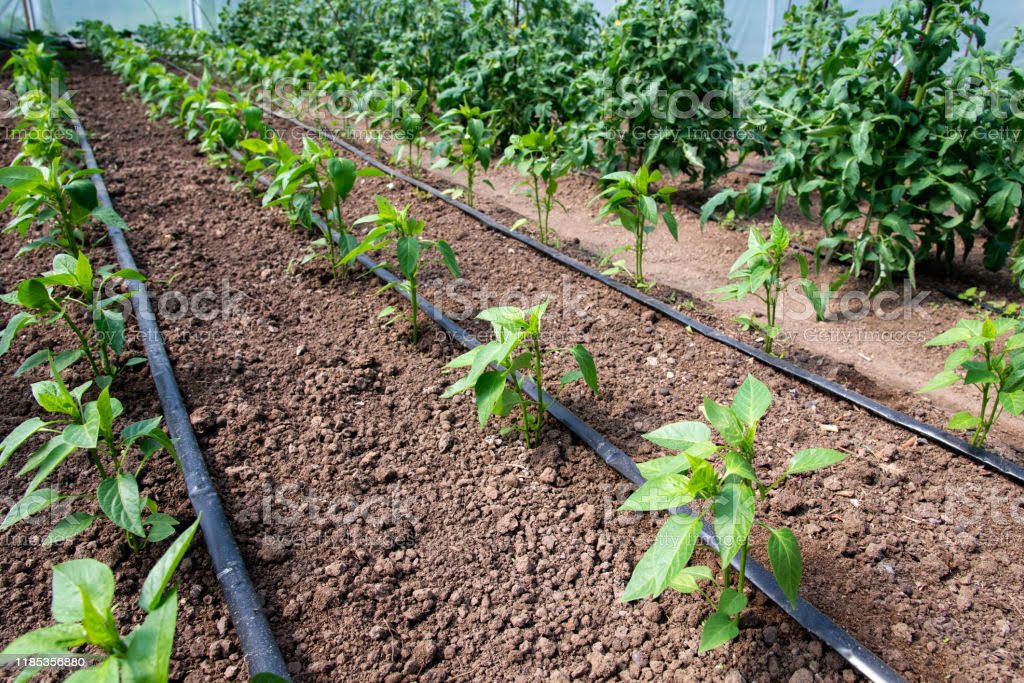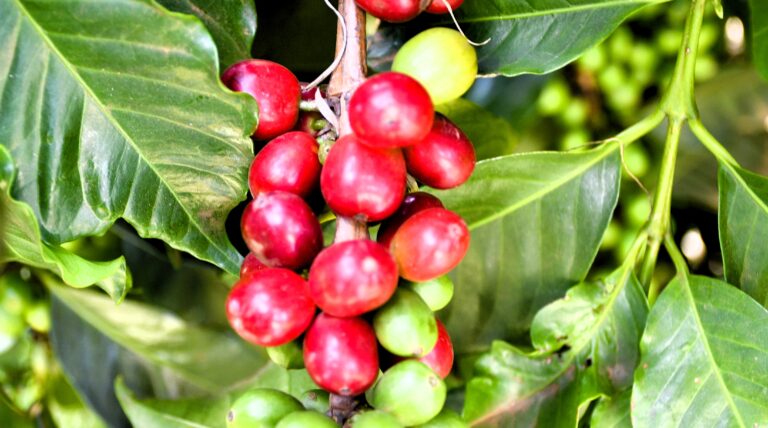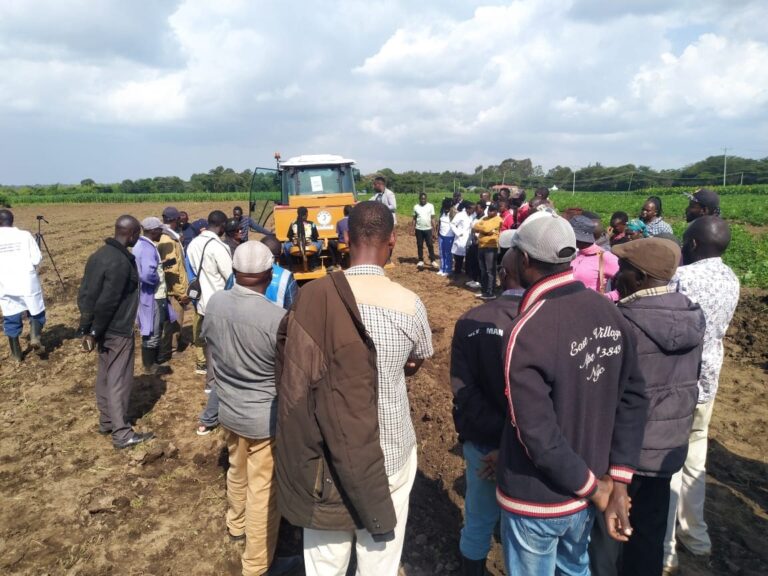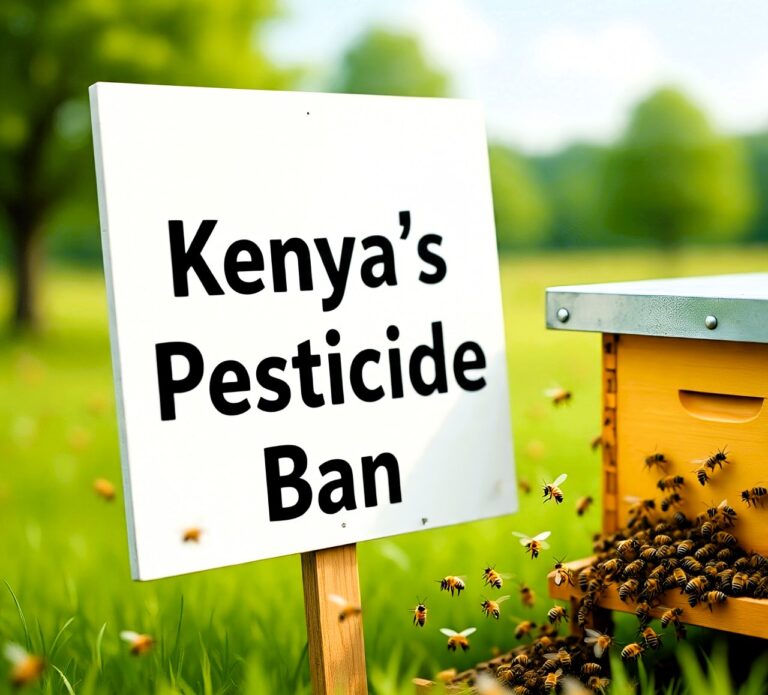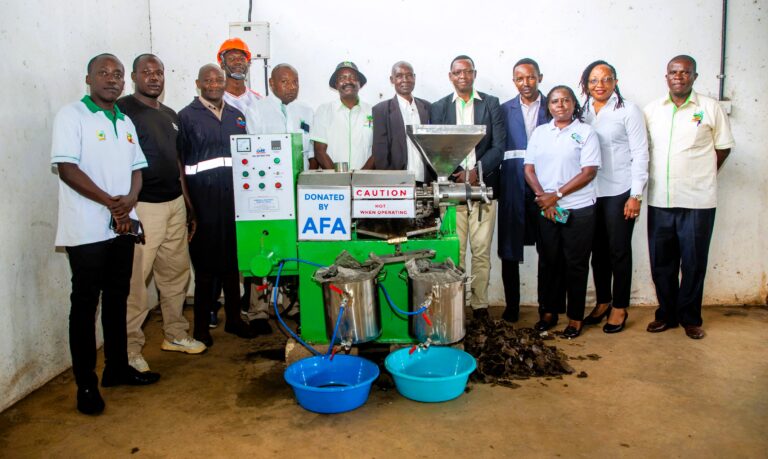By David Ndegwa
Drip irrigation is a very effective method of irrigation, majorly because it helps in conserving water by irrigating just the area occupied by the roots or the root zone.
A complete Drip irrigation is composed of
- Adequate water source either a river ,dam or a borehole
- Pumping Station or gravity that is enough to create the necessary pressure to run drips.
- Main lines
- Sub-mains
- Laterals.
- Starter connectors and rubbers
- 16mm or so PE pipes of about 0.5 to 1m
- PE to Drip connectors
- Driplines/Drip pipe
- Drip end caps.
Drips work by dripping water under pressure through engineered orifices (holes) which normally have grooves inside where water meanders through hence reducing its velocity to the manufacturer calibrated output or flow rate.
The flow rate per hole/ emitter which is common in horticulture is 1.1 litres per hour. The holes are mainly spaced at 15, 20, 30 etc. in cm.
The Drip spacings, the flow rate per hour per emitter and the pump output are used in determining the irrigation block design and the number of hours to irrigate a given area.
A drip line that is 50m long with a flow rate of 1.1 litres per hour spaced at 20cm will Drip (50÷0.2)×1.1 = 275 litres per hour.
If you take a standard acre of 80m by 50m with a bed spacing of 1.7m, it will give you 47m beds of 50m long. This will give you 1m at the top of the bed and a 0.7m pathways. One may argue that the pathways space is wide and wasteful but that is a discussion for another day.
Let’s go back to our 1-acre block with 47 beds. Ideally, many horticultural crops would do with 2 drips per bed which gives the total driplines required per acre as 47 beds x 2 x50m = 4700m.
Total emitters are 4700/.2 = 23,500
What would be the water volume if drips are run with the right pressure per hr. with 1.1 lts per emitter?
23,500 emitters x1.1 lts = 25,850 lts or simply 26m³ per hr.
What is the meaning or implications here?
For one acre to be fully opened for 1 hour, you require a pump with a capacity of 26m³ and a pod or dam or inlet that is delivering this kind of flow per hour. If your pump doesn’t have this capacity, you simply divide its output by the total flow rate of 2 driplines i.e. 1 bed, in order to determine how many beds can be irrigated at any given time and install a hydrant or control valves at that interval
eg.
2 driplines = 100m /.2 × 1.1= 550 lts or 0.55m³
Let’s assume the pump output is 10m³ per = 10/.55= 18 beds.
In order to irrigate effectively, this 1-acre block with such a pump capacity, you need to put head controls at intervals of 18 beds.
What are the dangers of not observing the above or irrigating at low pressures? Or even half full driplines?
Water wets the soil through infiltration which is normally affected by the flow rate or the rate of water application to the soil and the soil texture.
The infiltration rate of a given soil is constant and therefore, a higher water application rate than the infiltration rate results in a runoff. On the other hand, a low application rate will result in vertical infiltration that may go deeper than the root zone resulting to leaching.
Drip irrigation is supposed to form a sort of a bowl-like shape that later joins together to form an irrigated zone of about 20cm wide with a depth that depends on the hours of irrigation. If the Drip pressure is low, water will tend to move to the lower side at the expense of the higher side resulting in an irregular distribution of water.
If the land is flat, water will move vertically more than horizontal and it will therefore fail to cover the entire root zone width wise. If it covers for example 75%, your crop will cut its targeted yields by 75%.
In summary, many farmers may fail to meet their target production due to a malfunctioning Drip system other than other parameters. It’s important to note that plants are drinkers – they take their food only in solution form. This implies that when the moisture levels are inadequate in the soil, the plant won’t be able to absorb optimal nutrients and its production will be directly proportional to the absorbed nutrients whether you have put tons of fertilizer or not.
It’s important to note that if the target like for maize is to produce 40 bags, there is also the crop residual and their total forms the total amount of NPK that must be absorbed from the soil in order to reach this target.
If the levels of NPK are not enough in the soil to meet this target, there would be no chance in a million that you will hit your target. On the other hand, the nutrients may be adequate in the soil but the moisture is low which results in low uptake and therefore resulting in low crop yields.
I hope I have taught you enough to warrant an Mpesa message!


